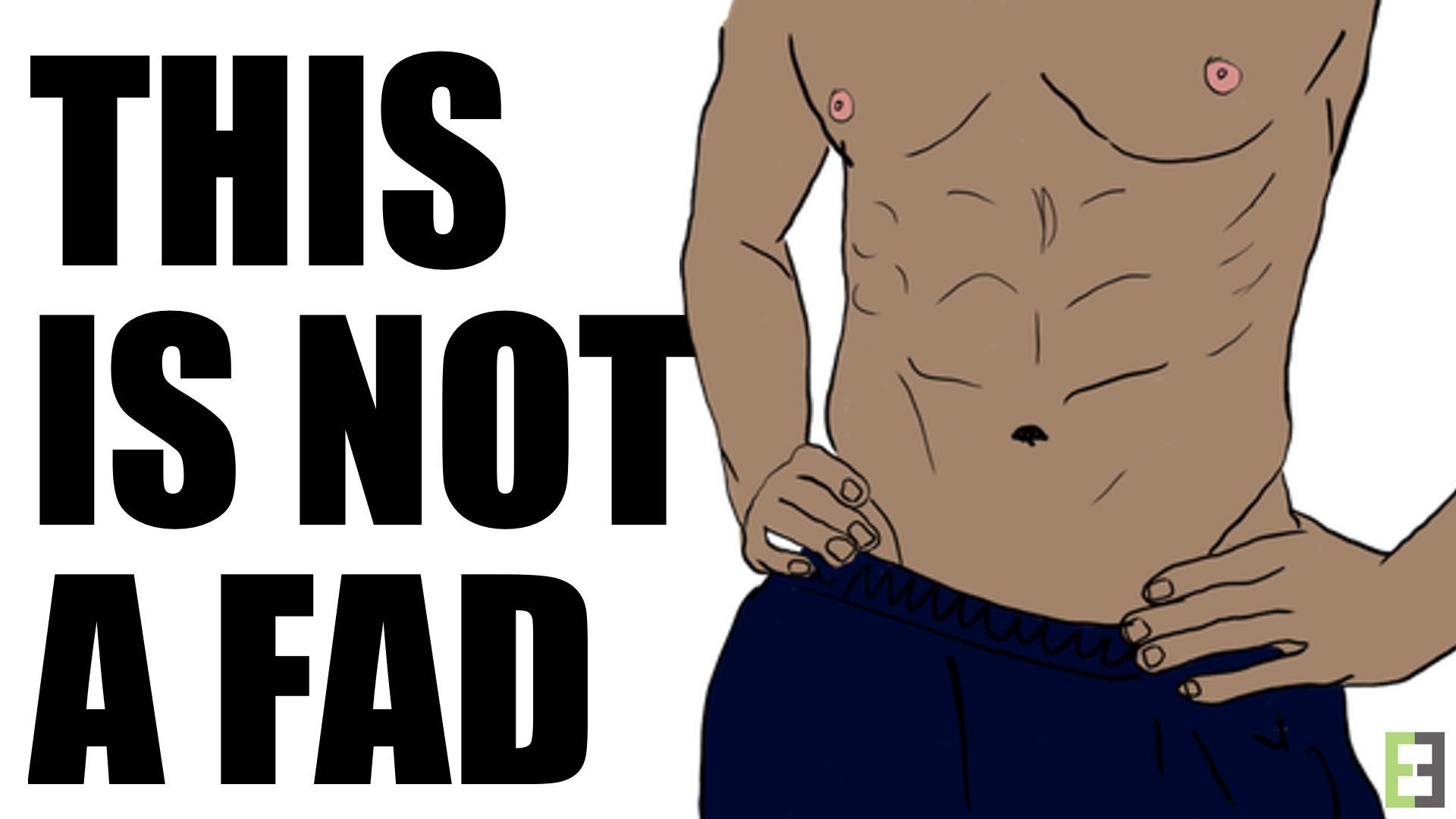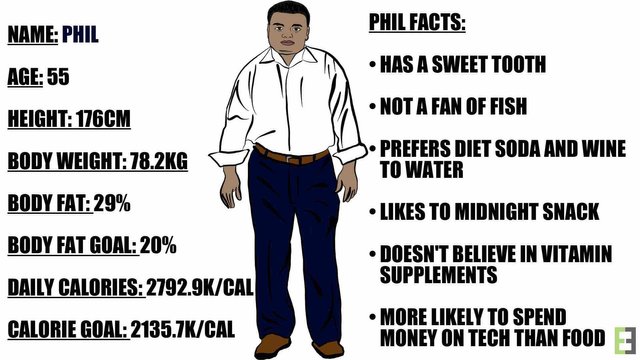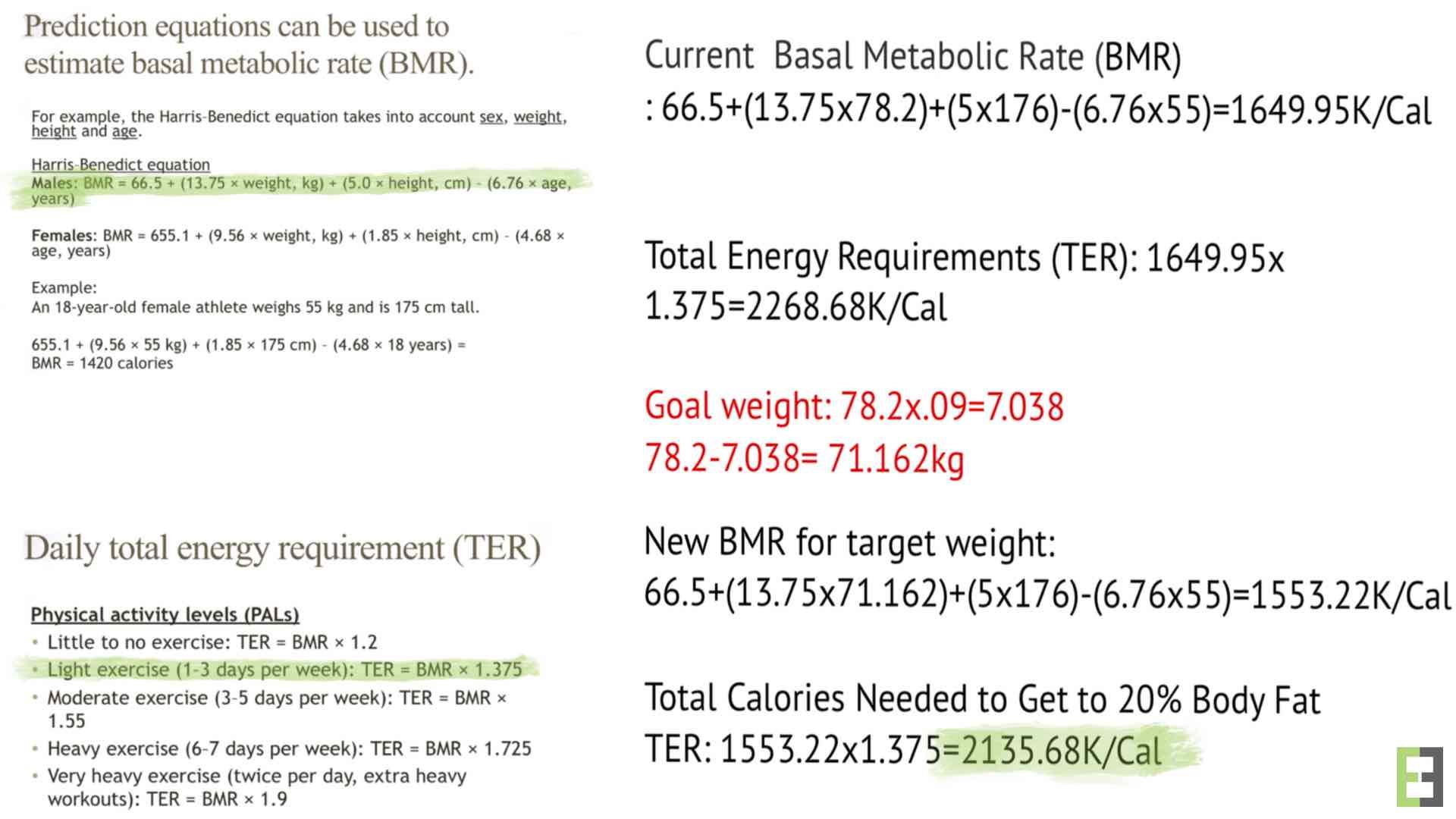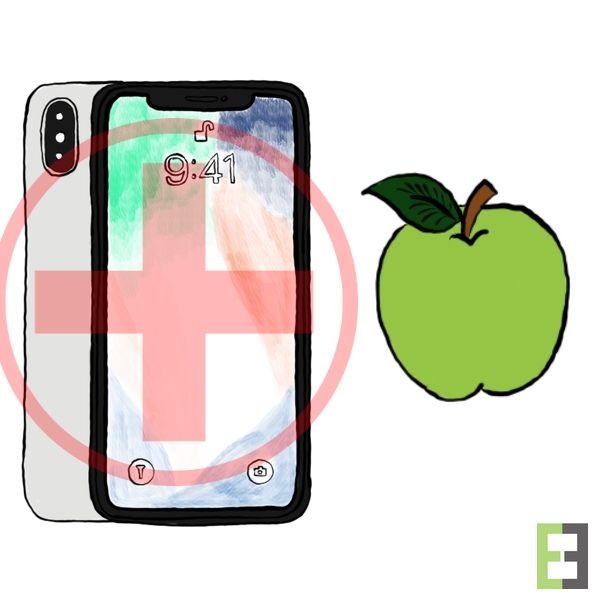A Scientific Approach to Diet and Nutrition

Over the last number of years, the spotlight has shone on the nutrition realm for its association with non-communicable diseases like cancer, dementia, type-two diabetes and heart disease, to name a few [5].
Overweight and obesity, in many cases, is a symptom of improper diet and holds a close relationship with many of the diseases as mentioned above [8]. With overweight and obese levels reaching upwards of 50% in some populations, there is a pressing need for dietary interventions.
In this post, I will cover different nutritional assessment techniques and methods for providing a safe diet plan designed for weight loss and meeting all the bodies nutrient requirements.

It is essential to control the rates at which body weight is gained or lost. Big swings of 5% or more in a 30 day period are considered dangerous in the medical industry [5].
Fat storage is regulated by the intake of fat, protein, and carbohydrates as fuel sources. Alcohol is not officially part of the ‘big three’ macronutrients, but, it still adds to the body’s metabolic load, in a similar way to carbohydrates [5].
Additionally, there are micro-nutrients, which consist of Essential Fatty Acids (EFA’s), vitamins, and minerals, used as co-factors and regulators for the millions of biological functions in the body [5].
The study of how the body interacts with all these nutrients falls under the field of Nutritional Genomics [7].
The UK’s Eat Well Guide (EWG), for example, is a government initiative implemented to provide nutritional information to the nation. This organization lists the quantities of all the essential nutrients needed for the average person to thrive [1].
As a sports scientist, the use of a generic, all-inclusive, system for health care must form only the basis of our support.
The real ‘secret sauce’ lies in personalized nutrition, which takes into account; the cultural, emotional and ethical nature of people, combined with, a broad understanding of the scientific literature [7].
Everyone is so interested in caloric balance for weight loss. The hypothesis is that, if, more calories are consumed than expended, then, weight is gained. Nutrition, is, however, far more complicated than this simple idea.
Meet Phil! He's our hypothetical subject, who we'll be analysing to demonstrate the broad investigation needed in dietary interventions.

Total calories:
Using the ‘my fitness pal’ mobile application, I was able to calculate Phil’s daily calorie consumption by tracking his food intake. I then calculated his Total Energy Requirement (TER), based on his anthropometric measurements (height, bodyweight etc.), exercise frequency and body composition goal of 9% body fat. The formulas used for the prediction model were ‘Physical Activity Levels (PALs) and the ‘Harris Benedict’ equation.

Analysis:
Results:
My client exceeded the recommended limits on total daily energy consumption by 657.2 K/Cal. All his Macro-nutrients were in excess, with sugar leading the pack.

Sugar:
The recommended daily allowance for sugar intake is around 5% of total calories consumed [1]. For the average male, that percentage amounts to 30g or 7.1 tsp of sugar per day. This quantity is not much when you consider that one can of coke has 35g of the white crystal in it. With Phil’s sweet tooth, courtesy of the tooth fairy, he averages around three times the daily limit.
Why is this a problem?
The skeletal muscle and liver stores sugars in the form of glycogen. The driver of this fuel, into the tissues, is insulin. Once the central storage banks reach their full capacity, the excess, free-flowing glucose gets shuttled into adipose tissue. The mechanism behind this phenomenon is through the insulin receptor sites detaching from the muscle tissue and attaching onto fat cells, allowing for fat storage. The body does this in an attempt to recreate a level of insulin sensitivity and maintain blood glucose homeostasis [8].
Phil’s high sugar consumption was perhaps a major contributing factor to his extra body fat.
Despite the excess calorie consumption, Phil showed a deficiency in 4 out of 6 micronutrients tested. A logical explanation for these finding is through the overconsumption of low nutrient dense, high energy, foods. Sugar is an excellent example of these ‘empty calories’.
Age-related deficiencies:
With my client nearing 60 years of age, it is pertinent to know that Malnutrition, amongst the elderly (over 65 years), is as high as 35%. From the age of 60 onwards, our Basal Metabolic Rates (BMR) dramatically decreases by around 100kcal/day, every decade. The minimised energy requirements relate to a decrease in lean body mass. Due to the need for less food as an energy source, it becomes increasingly difficult for seniors to reach their minimum micro-nutrient requirements [5].
Lowering Phil’s calories, even more, would put him at a higher risk for micronutrient deficiency, tough. Selecting the highest nutrient dense foods, is, thus, of utmost importance.

Water balance:
Phil consumed an average of 671ml of ‘pure’ water per day. The rest of his fluids came from diet soda, coffee, coconut water and wine.
Highly palatable fluid mixtures (sodas, etc.) are often consumed for enjoyment rather than hydration. The unnecessary consumption of beverages can cause disruptions in the internal fluid balance [11].
Additionally, the responsiveness of the renal gland, in the secretion of antidiuretic hormone, declines with age, causing more disruption in fluid balance [5]. Finally, coffee and alcohol act as diuretic agents, which manipulates fluid homeostasis further.
Phil needs to increase his ‘pure’ water consumption while decreasing other fluids. Alcohol also has minimal benefit, beyond a fuel source. The empty calories of this beverage contributed to my clients ‘energy overload’ and micro-nutrient deficiencies.
Food addiction:
Processed foods, made up some of Phil’s food intake in the form of ice cream, cheesecake, tortilla chips, among others.
Highly palatable foods, such as these, are riddled with sugar and flavorings, which activate the brain’s internal reward mechanism [3]. The dopamine inducing effects of these dishes make them highly addictive and challenging to control.
Due to the psychological impact of these processed products, there is a tendency to consume them during times of emotional stress. It is for these reasons that obesity and overeating are linked to depression in both animal and human subjects [3].
Emotional dependence to these ‘harmful’ foods, could cause Phil to fall out of his diet plan during times of stress.

The importance of Omega 3:
The greatest source of long chain, Omega 3 fatty acids, EPA and DHA, derives from fish. These substrates are essential for controlling chronic inflammation as well as mental health [3].
Phil hardly consumes any fish, putting him at high risk for omega 3 deficiency.
Limitations:
Protein:
A large sum of the older population is under-nutrified in protein. This macro-nutrient is essential for prevention of muscle wasting, which is common in his demographic [5]. The broad age range of 19-64 years, in the EWG, makes me question how a teenager requires the same amount of protein as an ‘almost’ pensioner. Doing a test like the Serum Albumin Screening is a more accurate way of determining protein needs [5].
With these facts in mind, the protein recommendations for Phil, based on the norms, are up for debate.

Micro-nutrients:
The micronutrient levels of Phil were also vaguely estimated from his food intake. The results never took ‘food quality’ into account. The nutritional density of an apple, for example, will vary from one area to the next.
Compromised gut absorption through, chronic, low level, inflammation is another factor to consider. Eating allergenic foods like wheat and milk is one possible attribute of inflammation [6].
The presence of pathogenic bacteria like H.Pylorie or intestinal worms would also cause nutrient deficiencies, despite sufficient food intake [14]. Blood work is thus necessary for an accurate understanding of my client’s nutrient deficiencies. The necessary interventions would then take place to rectify his levels back to ‘normal’ ranges.
Short term Vitamin and mineral supplements may need to be administered to reach desired micro-nutrient levels [5].
Support:
A dietary program should not limit itself to just nutrient requirements, but, must include practical information on the implementation of those values. Recipes, shopping guides, and awareness on ‘nutritional labels’ are some of the beneficial teachings which should be provided [7].

Cost:
The financial sustainability of the diet plan is of equal importance to any other factor. In the 1960’s, the average American spent 36% of their disposable income on food. Now, the average has dropped to just 11% [13].
There is less of a willingness to spend money on ‘expensive’, wholesome foods when processed, mass-produced foods are cheaper.
Phil would rather spend $1000 USD on an Apple IPhone than wholesome food. Perhaps he is confused as to which apple keeps the doctor away.
Background:
Phil’s cultural background and social needs is another crucial factor to consider.
If he is Japanese, for example, rice and some other traditional foods need to be included in his program to ensure a long-term acceptance and consistency in the diet.

Time-restricted feeding:
The body responds to food differently at specific times of the day, due to the link between our circadian rhythm and metabolism [9]. A study on night shift workers found that they were more resistant to glucose later in the day [9].
Due to Phil’s busy traveling schedule, the consistent timing of his meals may turn out to be a challenge.
Conclusion:
There are many factors to consider within a dietary support structure. Calculating a client’s macro and micronutrients, based on a standardized equation or population ‘norms,' is, only the beginning of the process.
A professional nutrition service is one which takes into account, the cultural, financial and lifestyle factors, in combination with valid testing protocols. It then matches the results across the academic literature to make recommendations.
Follow @exercisinghealth
Bibliography:
[2]https://www.ncbi.nlm.nih.gov/pubmed/14522748
[3]https://www.ncbi.nlm.nih.gov/pmc/articles/PMC4150387/
[4]https://www.ncbi.nlm.nih.gov/pubmed/20303371
[5]https://www.ncbi.nlm.nih.gov/pmc/articles/PMC2682454/
[6]https://www.fda.gov/Food/ResourcesForYou/Consumers/ucm079311.htm
[9]http://m.fasebj.org/content/31/1_Supplement/799.5.short
[10]http://journals.plos.org/plosone/article?id=10.1371/journal.pone.0039589
[11]https://www.ncbi.nlm.nih.gov/pmc/articles/PMC2908954/
[12]https://www.ncbi.nlm.nih.gov/pubmed/25824106
[13]https://www.ncbi.nlm.nih.gov/pubmed/11274524
*All images except EWG were created by @exercisinghealth

@exercisinghealth appreciate the post! It's full of good information for readers! People make losing weight into this complex equation when really it's pretty easy to understand. I believe people understand the difference between drinking water and a soda. They just don't want to.
Step one: WANT IT
I believe in anyone who truly wants to lose weight, or somebody who wants to achieve their dream body. They deserve it. Not everyone is fit for a reason. They don't want it bad enough.
Thank you, I'm glad you liked the post.
Anyone can 'diet'. Personalised nutrition is, however, a lot more complicated. If you don't have a basic understanding of physiology, biochemistry and psychology, then it's like picking at straws. It is for this reason that people specialise in clinical nutrition, dietetics and other similar degrees.
How our bodies respond to food, is, a science.
On the contrary, there is the Palaeolithic model of nutrition which has gained a strong following. These people simplify their diets by only eating the foods which existed in the Palaeolithic era. It's a basic staple of meats, vegetables, nuts, seeds and some fruit. Nothing else.
Their mantra is: if it is processed, don't eat it. Consume only what is produced by the land, and, prepare those foods as simply as possible.
I think their model is sound and straightforward. It is a good place for most people to start.
I really enjoyed this post and was glad to be able to take some information out of it! Just watching what I eat has become more important to me than ever this year, trying to stay focused! Thanks alot!
I am so glad you liked this post!
I wish you a healthy 2018!
Hello @exercisinghealth
This is a lot of great information. Although am not really overweight. I haven't really thought about the kind of food i eat. This post has made me want to put more thought into the types of food i eat and how often i take sugar.
Thanks for sharing!
Hi @sciencegeek,
Nutrition is one of the foundational pillars to health. It is in our best interests to pay close attention to what we eat.
I am so glad you found the information interesting. Thank you for taking the time to read through it all.
i really like this post!
Thank you! I’m glad you liked it.
This post is excellent. I am currently getting back into healthier eating habits. I struggle with the discipline it takes to eat clean foods. Reading articles like this help drive home the facts of eating a healthy and remind myself to do it.